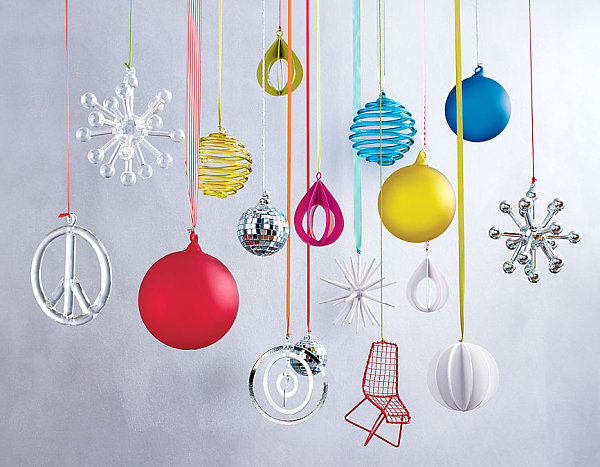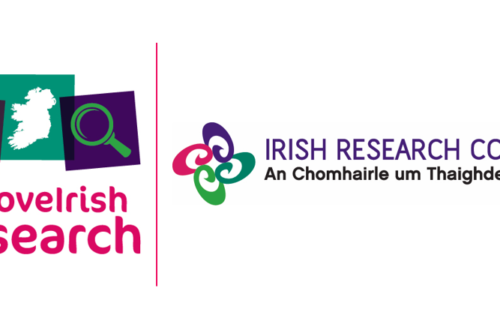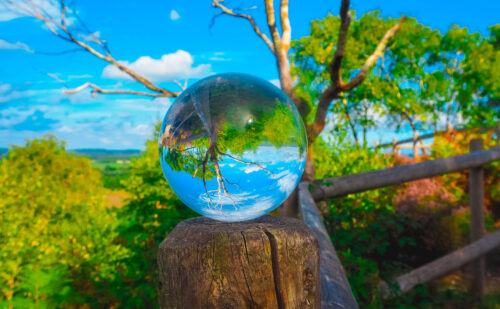
Irish Research Council highlights scientific and historical roots of popular Christmas traditions
Posted: 19 December, 2016

The Irish Research Council has today (19.12.16) released ‘12 Facts of Christmas’, detailing the scientific and historical origins of many popular Christmas traditions. Not surprisingly, there is a heavy focus on food-related facts, including the science behind why some people hate Brussel sprouts, why chocolate makes us feel good, and how long it takes to walk off a typical Christmas dinner. The list also focuses on the origins of Christmas trees and cards, as well at the use of holly and mistletoe for Christmas decorations. There are lots of Santa-related facts too, including an explanation for why Rudolph has a red nose.
Commenting today, Dr. Eucharia Meehan, Director of the Irish Research Council, said: “We grow up taking so many Christmas traditions for granted, but we often neglect to wonder where they came from or why they exist. Why do people kiss under mistletoe? Why do we decorate trees to celebrate Christmas? Why does the best-know reindeer in the world have a red nose?
Our ‘12 Facts of Christmas’ are intended to answer some of these questions. In providing these answers, we’ve drawn on research being conducted in institutions throughout Ireland, and on the expertise and findings of researchers in areas as diverse as astronomy, horticulture, geology, statistics and physics.”
The ‘12 Facts’ released by the Irish Research Council today are as follows:
- The origin of Christmas trees:
The tradition of decorating trees to celebrate Christmas is commonly traced back to Martin Luther, the famous 16th Century German religious reformer. Legend has it that Luther was walking home through a forest one night, and noticed the stars twinkling through the branches of evergreen trees. Inspired, he brought a fir tree into his home and placed candles on it to show his family, telling them the lights should remind them of the stars and heaven. This custom soon became popular in Germany, and the tradition reportedly spread to the UK in the 1800s – through the German-born spouses of members of the Royal Family. Fast forward a couple of hundred years, and a whopping 60 million Christmas trees are sold in Europe alone each year. - Why does Rudolph have a red nose?
This question was bugging medical researchers in the US and the Netherlands so much that they decided to investigate. They travelled to Norway and used video-imaging technology to get a really close-up look at how blood circulates in reindeers’ nasal passages. They found some similarities between blood-flow in the noses of humans and reindeers, but there was one important difference: blood vessels and circulation networks inside the noses of reindeer are 25 per cent more densely packed than those in the noses of humans. They believe this difference explains why Rudolph’s nose is red. - How many calories will I consume on Christmas day?
Recommended daily calorie intake is in the region of 2,000 for women and 2,500 for men. The bad news is the average Christmas dinner contains about 3,000 calories (and add lots more if you take a tipple with your meal!). It would take almost 12 hours to walk off this energy, so get planning your post-Christmas exercise regime now. - Why do some people detest Brussel sprouts?
Brussel sprouts have a natural component called glucosinolate, which – when cooked – breaks down into a chemical called isothiocyanates. Research indicates that isothiocyanates cause food to taste bitter for about 70 per cent of the population, while the remaining 30 per cent taste nothing. So the next time, a family-member is steadfastly refusing sprouts, bear in mind it could be because – to them – they really do taste unpleasant! On the flipside, Brussel sprouts are a super-food: they’re packed with vitamins, folic acid, fibre and minerals. They’re higher in protein than most vegetables, and have even been associated with anti-cancer properties. And they grow well in Ireland, so you can ‘buy local’ too. - Why do we need a nap after dinner?
An essential amino acid called tryptophan is found in turkey (and other meats), and is sometimes blamed for causing the uncontrollable drowsiness that afflicts many of us after Christmas dinner. Another cause may be that – because we’ve eaten so much – we require a lot of blood flow to our digestive system to help us digest all that food. This means there’s less blood flowing elsewhere in the body, which contributes to the urgent need for a nap! - Why does chocolate taste so good?
That same essential amino acid – tryptophan – is also found in chocolate. It plays an important role in producing serotonin in our bodies. Serotonin is a neurotransmitter, i.e. a chemical that relays brain signals from one area of the brain to another. High levels of serotonin are associated with feelings of wellbeing. So chocolate really can make you feel good! - How far does Santa travel on Christmas Eve?
Santa travels approximately 120 million kilometres around the world on Christmas Eve. If we allow him approximately 32 hours to complete the trip (taking into account time zones across the world), this means he travels at an average speed of 1,000 kilometres per second. To put this into perspective, a conventional reindeer (though not the special ones pulling Santa’s sleigh, of course!) runs at a speed of about 24 kilometres per hour. - How heavy is Santa’s sleigh?
Santa will deliver presents to between 500 and 600 million children on Christmas Eve. Assuming 1kg of presents for each child, this means his sleigh will weigh in the region of 600,000 tons. That’s the equivalent of about 82 Eiffel Towers! - And a few more Santa stats…
The children receiving presents from Santa will be spread across 170 million homes. With approximately 32 hours in total to reach all these homes, Santa needs to visit 1,475 houses every second, giving him about 1/1500 of a second to stop at each house, dart down the chimney, grab his snacks, and get back to his sleigh. - Why do we send Christmas cards?
It’s thought Christmas cards originated from New Year’s cards, sent by German families in the 14th Century. The first cards sent specifically at Christmas were made by children in English schools in the early 18th Century, and were called ‘Christmas Pieces’. They were decorated by hand and then sent home. The manufactured Christmas card did not become popular in England until the 1860s, when postage became more affordable. From there, the tradition spread to Europe and America, where printers began to mass-produce cards. By the 1900s, the custom had become firmly established as a part of Christmas. - Why do we use holly as a Christmas decoration?
Holly has been used in rituals and celebrations since pagan times. Ancient Romans associated it with their sun god, Saturn. In Ireland, the Druids believed holly to be very special because it kept the landscape green and beautiful after deciduous trees lost their leaves. These pagan customs were carried through to Christianity, with holly gradually losing its pagan associations and becoming a symbol of Christmas. One reason for its widespread use is thought to be because, as a common feature of the winter landscape, it was a free and easy way for even the poorest families to decorate their homes. - Why do people kiss under the mistletoe?
Like holly, mistletoe has had special connotations since pagan times: it was associated with fertility rites, with boughs of mistletoe hung to ward off evil spirits and promote fertility. The tradition of kissing under the mistletoe would appear to be a natural extension of this. The tradition may also have been influenced by Norse mythology: in the legend of Baldur and Loki, a mistletoe spear was used to kill Baldur. Subsequently, it was decreed that mistletoe would forever more bring love to the world, not death.
‘12 Facts of Christmas’ was released today as part of the Irish Research Council’s #LoveIrishResearch campaign, which has been running throughout 2016. The campaign aims to connect members of the public with the amazing work being conducted by researchers and highlight their achievements across multiple fields.
Contact:
Niamh Breathnach, Alice PR & Events, Tel: 085-1461231, Email: media@alicepr.com

